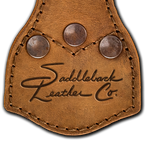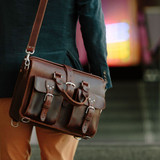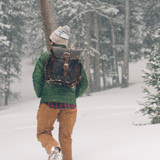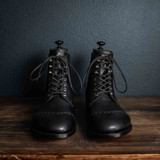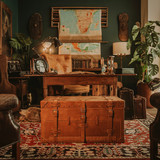What Thought Goes into a High Quality Distinguished Design?
There are only two types of shoe designs in the world. One that will get you compliments and one that won't. One that will make you walk around like you own the place and one that won't. One that will raise people's perceptions of you when you walk in the room and one that won't. One that will build confidence in areas of yourself that you didn't know needed a boost and one that won't.
But I didn’t want just pretty good looking shoes, I wanted the best looking shoes in the world, for people with my same tastes. Something that people would ask, "Where did you get those shoes?" instead of "How long did the doctor say you had to wear those shoes?" I wanted them to be versatile enough to wear with a suit or with jeans, to work in the garden and then wear to a wedding. So, I asked one of my best friends for help.
The Designers
Julian came over from England and formally studied art and sculpture in New York and then apprenticed under one of the legends of fashion photography for years, so he definitely had an eye for what looked right.
I learned that Julian is one of the most accomplished and respected shoe designers of our generation. A friend of mine, Clark, who has been in the high quality footwear industry for almost 40 years, was shocked when I told him that I got Julian in on the project. Surprised, he said, “You know Julian Imrie? I first saw his work in 2008 in a high end shoe store in Japan and his design and style has strongly influenced the entire shoe and boot industry we have today. Julian Imrie stands tall in the boot world”. When Ralph Lauren saw his work, they immediately brought him in to design several styles of boots for their upper end RRL collection too.
Each of us has worked at least 25. years designing in, Julian in shoes and myself in leather bags and together, we had so much fun discussing because a few small details can raise the level of class in a shoe tremendously.
The Sum of Many Excellent Details
There is no one single detail that makes much of a difference in the look of a shoe, but rather it’s the sum of about two dozen small, almost indiscernible, details that draws us to one shoe over another and makes all the difference in the world.
Julian asked me to show him images of the styles I was most drawn to and tell him what details inspired me about them. He then guided me through and opened my eyes to each individual fine detail of a shoe that I needed to consider, based on that particular style. We walked through the following:
- Line angles and spacing relative to other lines.
- Stitch count and number of lines,
- Thread color
- Stitch count per inch.
- Thread thickness.
- Radius of curves and corners relative to the curves of the boot,
- Spacing of visual weight, Were there too many lines and shadows on one side and not on another?
- The toe spring. Higher is more casual and lower is more serious.
- Toe thickness. Thinner is more elegant. Fuller is more off pavement.
- Shoe lace color and thickness.
- Hardwarer color and size and number of holes and hooks,
- Triangles in the design?
- Balancing simplicity in one area versus complexity in another.
- The angles of the back of the heel to the ground.
- The length of the tongue.
- How far out would the sole stick out past the shoe body?
- How to add in the distinguishing marks that made it Saddleback
- The look of the arch
- The shape of the toe cap.
- The length of the toe cap.
- Holes in the toe cap or not.
Together, we adjusted and adjusted the smallest of details until I felt it was perfect. Not perfect for everybody in the world, but perfect for me.
The Perfect Colors
But figuring out the perfect colors to match this particular more refined James Bond semi-dress style may have been the hardest part. For example, bright red and yellow work better with a Ferrari while dark brown and green work better with a Land Cruiser. This refined James Bond style semi-dress boot needed different colors than what go perfectly with the upcoming casual Indiana Jones rugged style boot. But then the tone of that color was another story and pinning it down was a chore.
English Tan
Our natural color, English Tan, I wanted to age with a slight reddish orange hue rather than a yellow gray hue and I didn't want to paint the hide. So, they had to be tanned with 90% chestnut tannins and 10% mimosa tannins for just the perfect aging affect.
Pitch Black
It's surprising how many shades of black there are. There's blue black, gray black, yellowish dirty black and a bunch of other chalky blacks. I chose the our Pitch Black for this very shoe.
Oxblood
The Oxblood took so long to get just right. And when it gets conditioned and is out in the sun, it gets darker. That's exactly what I wanted, but it was hard to get it just right.
